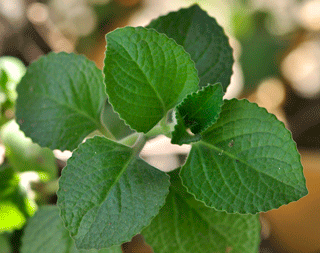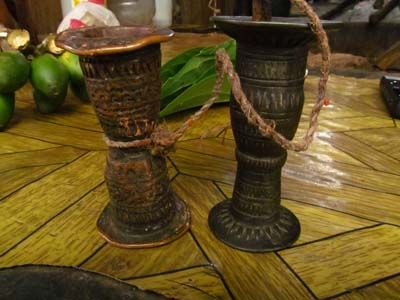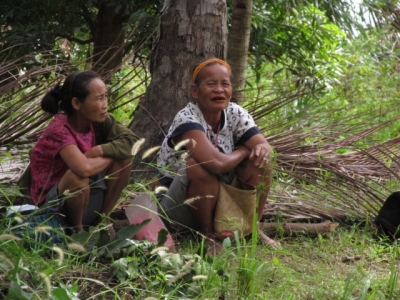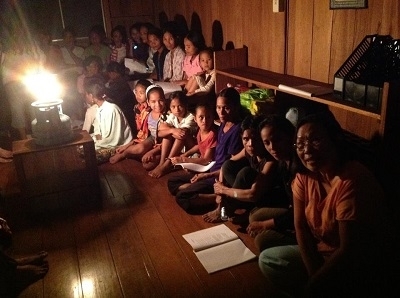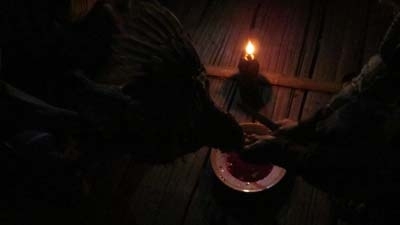Philippine Traditional Knowledge Digital Library on Health
TKDL
This national electronic database is a modern method of protecting our cultural heritage as old and new documentation on traditional knowledge in health are gathered and encoded into a digital format. Should traditional knowledge accessed in the TKDL be used for further scientific studies, the individual or agency will be linked to the knowledge-owner community to whom they should secure free and prior informed consent. Eventual product development shall call for discussions and agreements on appropriate access and equitable benefit-sharing.
The Philippines is one of the richest countries in terms of cultural diversity, as well as of biodiversity. There are 110 indigenous communities and more than 185 ethnolinguistic groups in the country.
| GROUP | |||||||
| Major | Ayta | Cordillera | Cagayan Valley | Mindoro | Palawan | Lumad | Bangsamoro |
| Ilocano | Agta | Isnag | Ibanag | Alangan | Batak | B'laan | Iranun |
| Pangasinan | Alta | Kalinga | Isinai | Buhid | Cuyonon | Higaonon | JamaMapun |
| Kapampangan | Ati | Ifugao | Bugkalot | Hanunuo | Palawano | Mandaya | Iranun |
| Tagalog | Atta | Kankanaey | Gaddang | Iraya | Tagbanwa | Manobo | Maguindanao |
| Bicolano | Ayta | Ibaloi | Itawis | Ratagnon | Subanen | Maranao | |
| Hiligaynon | Remontado | Itneg | Yogad | Tadyawan | T'boli | Tausog | |
| Cebuano | Tau-buid | Teduray | Yakan | ||||
| Waray | |||||||
| Chabacano | |||||||
The cultural wealth of the people is inextricably tied to the rich biodiversity of their ancestral lands. The loss of biodiversity to rampant logging, mining, and other environmental atrocities undoubtedly has an immense impact on the cultural wealth of our indigenous peoples and local communities. Lifestyle change as a result of displacement from their ancestral domains and lack of supportive mechanisms to pass on knowledge may lead to the discontinuance of their traditional healing practices.Each indigenous or local community possesses a unique body of traditional knowledge and practices which have been developed throughout centuries of use and passed down to succeeding generations. This information base continuously evolves, adapting to changes in a community's culture and environment. It includes the peoples's wealth of knowledge in health and healing. The communities, characteristically living in the mountains or their fringes, have depended mostly on plants and other natural products from the forest to prevent or treat sickness. But environmental degradation and the onslaught of lowland mainstream cultures now threaten their healing traditions.
Scope
The digital library provides available information gathered from work by researchers and scholars.
These include ethnopharmacological documentation, traditional healing practices including rituals, plant compendium, library of traditional healers, and traditional healing terminologies from available ethnobotanical studies, old lexicographic and linguistic texts as well as current immersion research studies being conducted in selected ethnolinguistic groups.
Each indigenous or local community possesses a unique body of traditional knowledge and practices which have been developed throughout centuries of use and passed down to succeeding generations. This information base continuously evolves, adapting to changes in a community's culture and environment. It also includes the people's wealth of knowledge in health and healing. The communities, characteristically living in the mountains or their fringes, have depended mostly on plants and other natural products from the forest to prevent or treat sickness. But environmental degradation and the onslaught of lowland mainstream cultures now threaten their healing traditions.
The cultural wealth of the people is inextricably tied to the rich biodiversity of their ancestral lands. The loss of biodiversity to rampant logging, mining, and other environmental atrocities undoubtedly has an immense impact on the cultural wealth of our indigenous peoples and local communities. Lifestyle change as a result of displacement from their ancestral domains and lack of supportive mechanisms to pass on knowledge are leading to the discontinuance of their traditional healing practices.
collaboration
This digital library is an undertaking involving many institutions including the Philippine Council for Health Research and Development (PCHRD), Philippine Institute of Traditional and Alternative Health Care (PITAHC) and the University of the Philippines Manila (UPM).
To cover the different ethnolinguistic groups across the country, partnerships with regional institutions were and will be formed.
A systematic and comprehensive endeavor to assist communities in documenting and upholding their healing traditions may be valuable in confronting this situation. The documentation previously done is not enough to cover the breadth and depth of the immense body of Philippine traditional knowledge and practices in health.
Another threat faced by indigenous and local communities is bio-piracy or the misappropriation of their knowledge and resources. Pharmaceutical, food, and cosmetic industries benefit from the wealth of their knowledge and environment yet only a few have acted upon the loss of the traditional knowledge, practices, and biological resources of the communities. Facilitating community documentation may then be a method to uphold the rights of the knowledge-owners as they are able to manage gathered data, and assert their right to free and prior informed consent, proper acknowledgement, and equitable sharing of benefits in the utilization of their knowledge.
In this undertaking, communities who will be trained in documenting their knowledge and practices may opt to:
a) Keep gathered data within the community,
b) Share selected data with a research institution with set mechanisms to protect community owned knowledge; the data will not be disclosed without prior informed consent of the community, and/or
c) Share selected information which may be publicly disclosed and inputted in a Traditional Knowledge Digital Library (TKDL), similar to the TKDL model of India.


